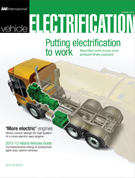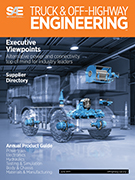Magazine

Tech Briefs: August 2018
2018-08-01
Designing a High-Speed Decoy Unmanned Aerial Vehicle (UAV) Using Thermoplastics in Aerospace Applications In-Flight Real-Time Avionics Adaptation Using Turbine Flow Meters for Aerospace Test and Measurement Applications Communicating from Space: The Front End of Multiscale Modeling Laser-Based System Could Expand Space-to-Ground Communication Hydraulic Testing of Polymer Matrix Composite 102mm Tube Section Research could lead to development of a composite material that can be processed at a low temperature and still be used at 1000°F. Permeation Tests on Polypropylene Fiber Materials Study attempts to determine if polypropylene nanofiber materials can be used in air filtration systems to remove toxic vapors. Inter-Laboratory Combat Helmet Blunt Impact Test Method Comparison Ensuring consistent test methods could reduce the risk of head injuries.



















